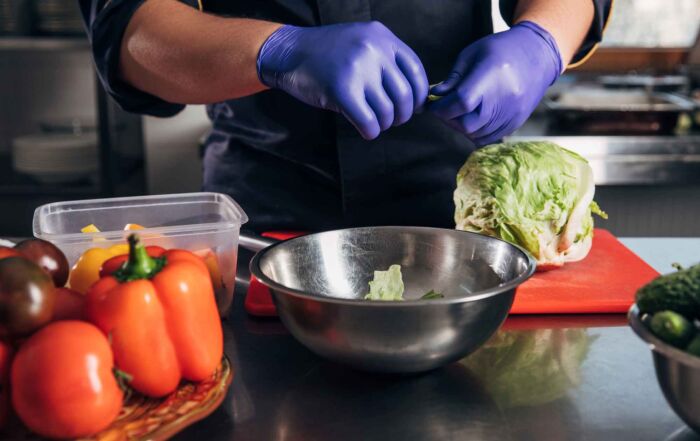Hepatitis A—On the Upswing
We all know that the leading cause of foodborne illness is norovirus, but there is another virus that should also be of concern to everyone–hepatitis A. According to the Centers for Disease Control and Prevention, since 2016 29 states have reported nearly 25,000 hepatitis A illnesses with 60% requiring hospitalization and 244 deaths. The number of cases increased nearly 70% between 2016 and 2017. This uptick in cases is cause for concern for everyone–state and local health departments, healthcare professionals, individuals, and for those of us in foodservice.
So just what is hepatitis A? It is a virus that is carried by humans and animals. Like other viruses, hepatitis A requires a living host in order to grow. People can contract hepatitis A from water, food, or a contaminated surface. Those at most risk are individuals who use drugs, experience unstable housing or homelessness, are incarcerated, or have chronic liver disease. Hepatitis A results in liver disease, noted by the appearance of jaundice at advanced stages of the disease. Typically there are no long-term effects of hepatitis A but an individual can continue to be a carrier for some time.
What can you do to prevent getting the viral liver disease? Like many other battles, the best defense is a good offense. The best strategy is to get vaccinated for the virus. Consult a physician about the use of vaccination as a preventative measure. If you know you have come in contact with a person with hepatitis A or live in an area experiencing an outbreak, we strongly encourage you to consider having a conversation with your physician. If you have been exposed, the vaccine is effective for up to two weeks following the exposure.
When epidemiologists examine investigation reports, the cause of the hepatitis A incident or outbreak cannot always be identified. One example of a current hepatitis A outbreak was tracked back to blackberries (although we don’t know if it was due to water, human contact, or something else). Blackberries sold in two stores in six Midwestern states resulted in 18 people contracting hepatitis A. The distributor services 11 states, so more states may be involved. The berries were sold in September 2019, but as late as mid-November two new cases were identified. You might wonder why it took from September until November for cases to be identified in a product that is perishable. Two reasons may explain: first, some people may have frozen the berries for use later. (Contrary to popular thinking, freezing does not kill viruses or bacteria, it simply slows growth). Second, it may take up to 50 days or more for symptoms to appear in a person and for the virus to be identified. Because of the possibility of freezing, additional cases are expected before the outbreak is over.
Hepatitis A causes a serious illness, and it is important to understand what it is and how to mitigate its impact. Be sure to read our second blog this month to get more information on mitigation strategies that can be used in retail foodservices, and in our personal lives. Also, be sure to tune in to the January SafeBites webinar on January 21 to learn more. Risk nothing!
READ MORE POSTS
Reducing Waste, Raising Safety: Smart Strategies for Managing Food Waste
In the face of increasing food prices and an ever-increasing demand for foodservice operations to [...]
Cooling Food in Your Operation: Best Practices
Earlier in the month, I talked a bit about safely thawing food and, in my [...]
Chilling Out: A Quick Guide to Thawing Food in Foodservice
Thawing food and cooling food are two challenges we face daily in foodservice operations. Regardless [...]
Recommitting to Food Safety in 2025, One Meal at a Time
The start of a new year is a great time to cast aside old habits and [...]










